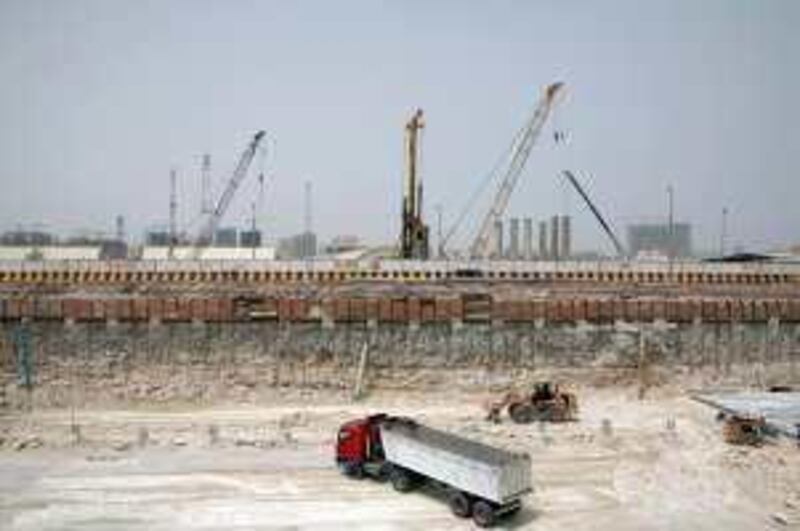Abu Dhabi has made great strides towards growth. This is evident in the physical and economic blueprints already put forward: the Abu Dhabi Economic Vision 2030, Plan Abu Dhabi 2030, Plan Al Ain 2030 and the Surface Transport Master Plan. These initiatives call for focused, organised, "smart growth" of urban areas and the hinterland. Smart growth is an urban planning and transit concept that focuses growth inwards towards the centre of a city to avoid urban sprawl. It advocates agglomeration and encourages land use that is transit-oriented and with "people-scale" walkable distances.
The common thread here is connectivity. But this is more than just physical connectivity. The Abu Dhabi Economic Vision 2030 emphasises the development of a knowledge-based economy that would sharply improve its competitiveness. A knowledge-based economy, in turn, requires suitable information and communications technology (ICT). For this reason, it would be important to develop an overarching ICT masterplan that joins all the dots of the smart growth strategy. Indeed, it is crucial.
But an ICT infrastructure presents monumental challenges, especially if it is to be implemented in a city that has grown organically over decades. So the question is, how to carry out "connectivity gentrification"? In completely new cities, such as Songdo in South Korea, that connectivity can be planned from the outset and built and managed as part of the city's conventional infrastructure, such as utilities and transportation.
In older cities, however, an ICT infrastructure must be built atop existing infrastructure. This has involved the sharing of existing service and utility ducts and pipes. Sometimes, this involves digging up existing roadways to reach phone and power lines, causing months of traffic congestions. Delays are also inevitable as a result of negotiations over use. In addition, the jurisdiction of the various regulatory authorities and service providers can overlap, and this leads to even more time-consuming negotiations. And then again, there is the question of cost. Who foots the bill for the seed infrastructure? This is a key issue, particularly for small economies and cities, and nations with small populations.
But in Abu Dhabi, we may have an out-of-the-box advantage. As the city is being built up according to the various blueprints, there is an opportunity to construct a robust, state-of-the-art ICT infrastructure alongside. For example, the plans for improving physical connectivity under the Surface Transport Master Plan can provide the opportunity to lay out the physical framework for ICT connectivity.
An ICT network can leverage off the construction efforts of the different transport networks, such as the metro, tram, regional rail and freight rail. These transport links, after all, will inevitably connect up all of Abu Dhabi. In this way, a base ICT infrastructure, for example, a fibre optic grid, can be built, to which service providers can then provide "last mile" connections to property clusters, from residential areas to business districts to shopping precincts to freight and transport hubs.
This would provide a ubiquitous "next generation access" infrastructure at the disposal of developers. Numerous business models can be developed from this concept. The multiplier effect on productivity, locational advantages and, hence, land values will be enormous. This, coupled with open ICT standards for both property and infrastructure facilities, will improve both public and private asset management and tracking.
It also reduces the wastage from duplication and the dependence on multiple closed proprietary networks. It would be prudent for this infrastructure to be conceived in terms of a public-private initiative, for one simple reason. Public sector investment in physical mobility can be coupled with private sector implementation of an ICT network based on a business model that would establish new revenue streams that would be created from the convergence of numerous networks into an open standard internet protocol linked to different key stakeholders.
The numerous benefits from this convergence and connectivity to the key stakeholders will be the ability to create incremental revenues from bolt-on services such as the creation and use of alternative real estate - think of data centres that can be leased to various users. The availability of an efficient ICT backbone is also a market differentiator for the city, and it can lead to the creation of more productive and flexible organisational models that can be set up at a faster pace. The net effect of this is that it reduces capital and operational expenditure over the lifecycle of the business.
Connectivity continues to shape and reshape the urban environment. This is more obvious when it is integrated into new public infrastructure plans, where it allows for a more collective approach to the management of this ICT-enabled connectivity with greater private sector participation. As we move closer to the second decade of this century, Abu Dhabi should take advantage of its already ambitious development plans and push the envelope one step further. Taking the leap into better telecommunications and high-speed internet connectivity will build a framework for a "connected capital" that encapsulates every shade of meaning in that term.
For its residents, this concept, when realised, would allow them to embrace a new economy that will create a distinctive point of difference. Gurjit Singh is the chief property development officer at Sorouh Real Estate





